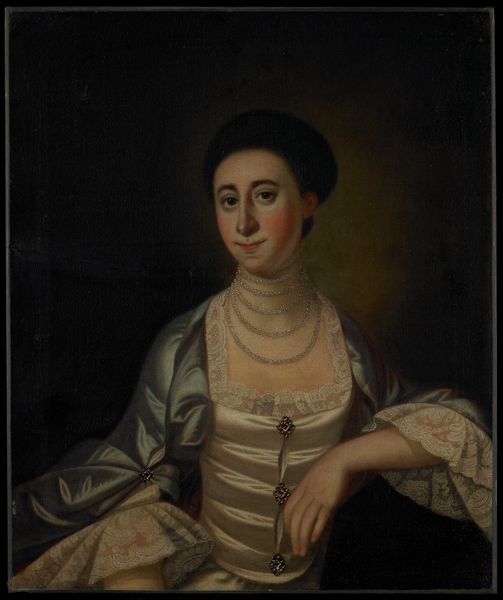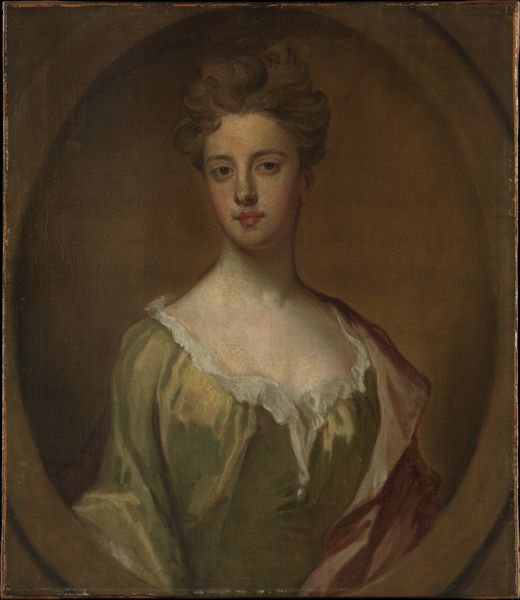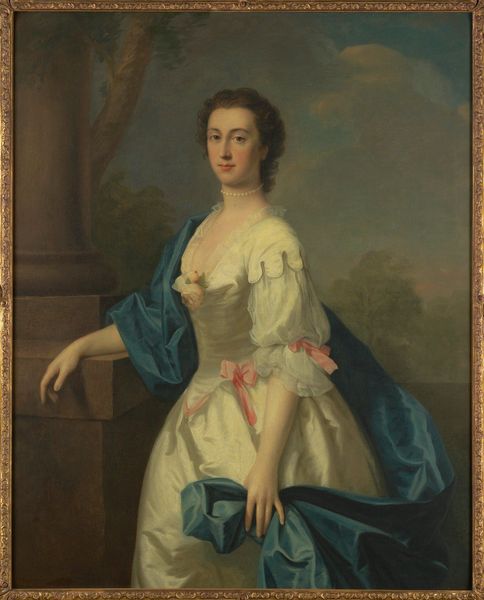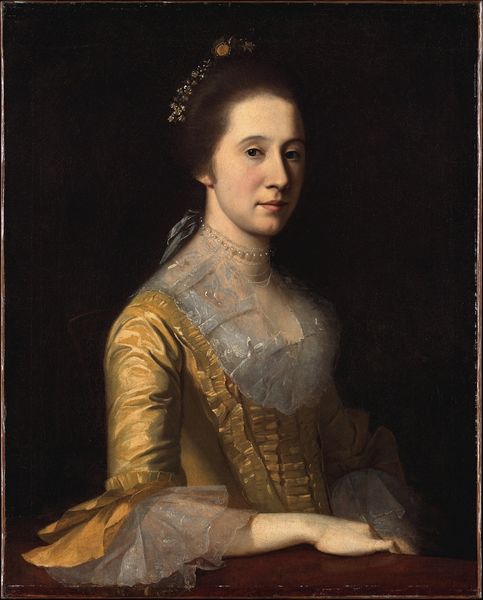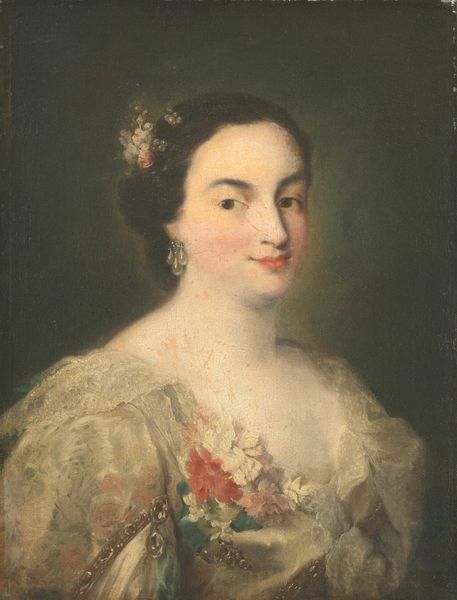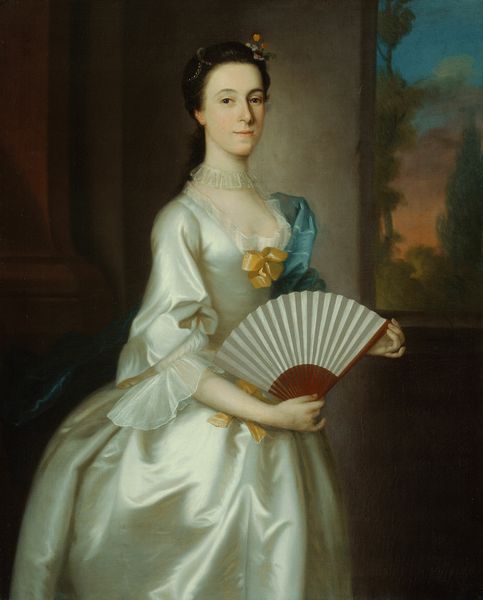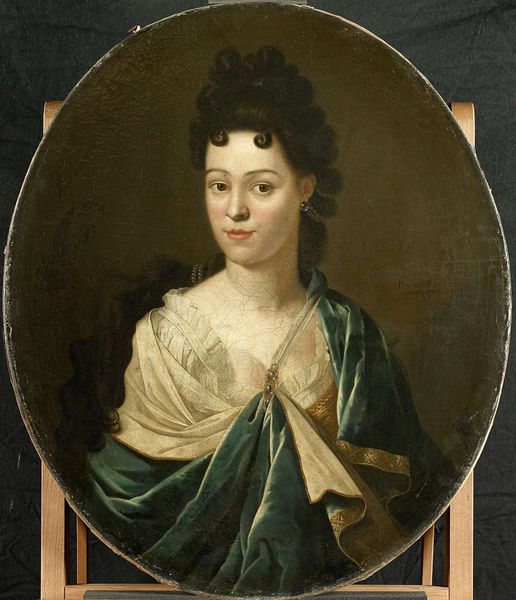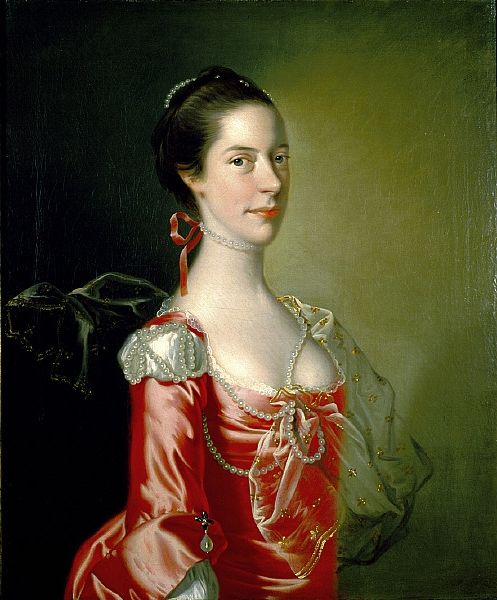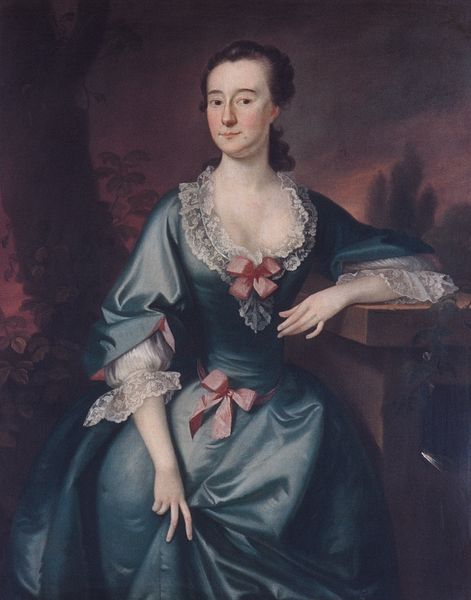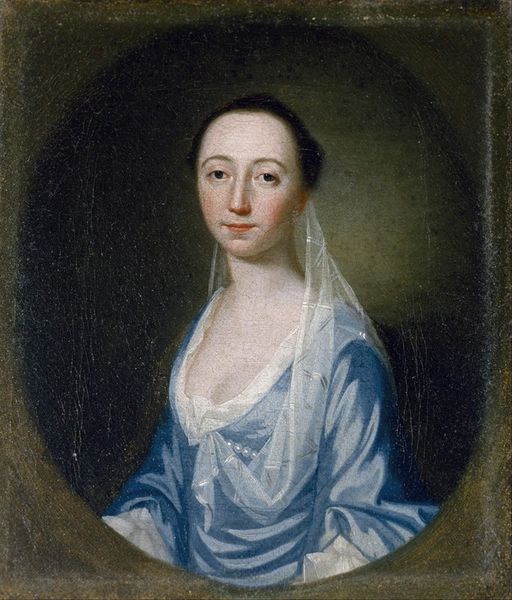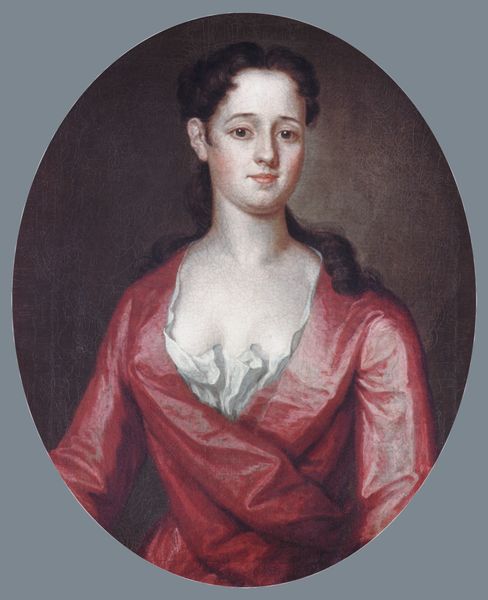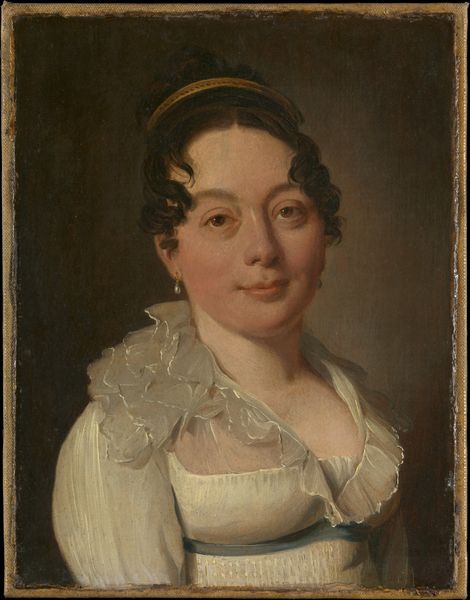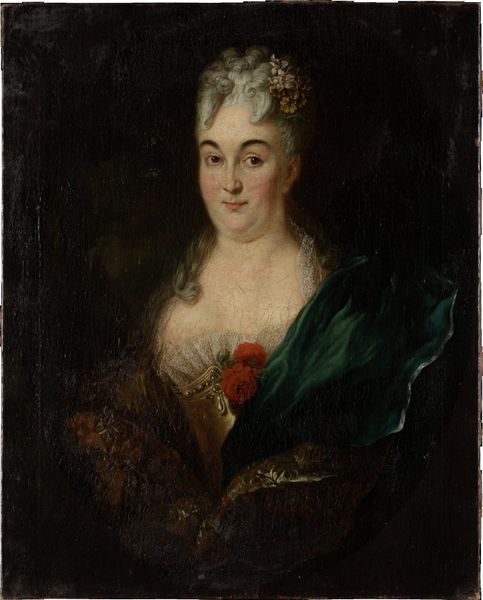
painting, oil-paint, oil-on-canvas
#
portrait
#
portrait
#
painting
#
oil-paint
#
figuration
#
history-painting
#
oil-on-canvas
#
portrait art
#
rococo
Dimensions: 29 x 24 1/4 in. (73.66 x 61.6 cm) (canvas)
Copyright: Public Domain
Curator: The cool gaze immediately strikes me, it's surprisingly direct. Editor: Let’s take a closer look at Jeremiah Theus’s 1770 oil on canvas, "Portrait of Mrs. Gardner Greene," currently residing here at the Minneapolis Institute of Art. It's a rather understated Rococo work. Curator: That demure floral embellishment in her hair and the very subtle pink of her gown point to the elite status without shouting. There's a symbolism of youthful simplicity here. Editor: I'm intrigued by the texture; you can almost feel the layered fabric, the slight impasto in those decorative sleeve clasps. It is important to remember how clothes-making defined so many female lives through labor, even among the well-to-do, whose garments might have been assembled from multiple sources. Curator: Absolutely, and notice the almost oval window in which she's presented – a symbol itself of idealized womanhood and a reflection on beauty. Windows signify looking out, longing, opportunity—or lack thereof. Editor: And let's consider the means to commission such a portrait at that time. We're talking about supporting a whole chain of artisans: the canvas maker, pigment suppliers, the painter’s labor itself. Theus, as an artist in colonial America, had to carefully balance these resources. Curator: I hadn't thought of it that way. The relative plainness compared to European portraiture of the period becomes more significant. It subtly hints at the transatlantic exchange and local interpretations. Editor: Indeed. Also, don’t overlook the implications of displaying a work like this; an early assertion of identity and wealth expressed through labor, not just a symbolic representation. Curator: Seeing it that way helps ground it in reality rather than just floating in the realm of aesthetic symbolism. The contrast is interesting to consider. Editor: Exactly. We appreciate these symbols of a specific status and we must also be sure not to overlook how they came to be. It opens new paths for us. Curator: Fascinating—that enriches my understanding completely.
Comments
minneapolisinstituteofart almost 2 years ago
⋮
Jeremiah Theus began his career in Charleston, South Carolina in about 1740, advertising that he painted landscapes and coats of arms. In 1744, he started offering painting classes to both ladies and gentlemen in Charleston, and settled into a successful career as a portrait painter.
Join the conversation
Join millions of artists and users on Artera today and experience the ultimate creative platform.
